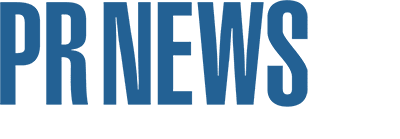By Neal Cohen And Evan Kraus
Inauguration Day is quickly approaching, but many are still talking about the important lessons learned from the recent presidential election. Among the many historic features
of this event, one is especially relevant to public affairs practitioners: President-elect Barack Obama's unprecedented grassroots mobilization efforts.
Coalition building has long been fundamental to public affairs. Bringing together a broad spectrum of individuals and organizations in support of a specific issue can be an
effective way to pursue shared objectives and help round out the dialogue with lawmakers, the media and the general public. Today, coalitions continue to rely on these basic
building blocks:
-
Define the coalition's objectives and assess its resources. Determine what the group wants to achieve. Maybe it is legislation, PR or an organizational goal. Make sure
the group has the necessary resources to sustain and grow the effort. Be transparent about goals, membership and funding.
-
Identify the right leaders. Leaders need to be able to represent the coalition by communicating its purpose efficiently and eloquently. A coalition's spokesperson is
integral to the success and perceived legitimacy of the group or cause. They also ensure outreach is consistently executed by organizing coalition members.
-
Grow and maintain the coalition. Adding members who feel strongly about the cause and have the resources to further the coalition's objectives is crucial. How membership
growth is structured depends on the needs of the coalition, the resources available, the number of issues addressed and the level of bureaucracy required.
-
Clarify the message. Make sure the coalition's message is strong, consistent and targeted to the right audience. Entering the public sphere without ample preparation will
prevent the coalition from accomplishing its goal.
-
Identify third-party support. Look for someone who's credible among the media, the public and policymakers. What type of spokesperson and what messages will motivate or
influence your target audience? Who does your audience trust?
Today these basic elements can be supported by an array of new online strategies and tools, as Obama's successful campaign illustrates. He relied heavily on the new and
emerging technologies to build and mobilize his constituency, keep his supporters informed and raise money. Here are a few examples of how he did it:
-
He packaged himself as the new-media candidate. Obama's brand, message, activities and communication style were all optimized for the online channel. His Web site
routinely received two to three times more traffic than those of Hillary Clinton or John McCain, topping out at nearly 10 million unique visitors in late October. He had four
times as many online friends as John McCain and more than three million supporters on Facebook. His YouTube videos were watched almost 100 million times. His campaign used blogs,
photo galleries and even a mobile ringtone mashup of Obama's speeches to build energy and buzz among his supporters.
-
He leveraged mobile devices. Obama promised exclusive or first access to key announcements to text-message recipients, which encouraged more than three million to register
their numbers with the campaign. Interactivity helped as well. Text messages reminding voters to visit polling stations included a link to a phone number that could help them find
their polling station and ask for a ride. And Obama launched a sophisticated new "Obama08" mobile application for the Apple iPhone that used GPS to help the supporter find the
nearest campaign events and get driving directions; profiled Obama's position on a customized set of legislative priorities; and supported phone patch-through to a donation
hotline for contributions.
-
He understood the power of search engines. Obama's team launched initiatives exclusively aimed at capturing search traffic. In one such effort, they sought to de-bunk the
rumor that Obama was a Muslim. They launched a one-page Web site with the URL "IsBarackObamaMuslim.com" and the title "Is Barack Obama Muslim?" The entire site was then one word
printed in a huge font, "No," with six footnoted links to credible, major media sources. The highly optimized nature of the tiny site vaulted it almost immediately to the top spot
on Google, where it was waiting for the tens of thousands seeking the answer every day.
The importance of the online channel in impacting politics and shaping policy continues to grow every day. What can public affairs practitioners take away from Obama's campaign
successes as they work to build stronger coalitions?
-
Don't ignore online. Online communities and the passionate debates they support, can be difficult to navigate, penetrate and influence, but avoiding them on any
campaign is incredibly risky in today's world.
-
Adapt your style. Obama's campaign clearly reinforced that personality wins online, as do informality, personalization and a high degree of interactivity.
-
Empower others. Although we would all prefer to route all communication through trained, expert spokespeople, one main lesson of the 2008 campaign is that although letting
go creates some risks, the rewards can be astronomically high.
-
Find and use the best tools, tactics and channels. There are millions of online communities and hundreds of different ways to get things done online. Finding the right mix
of tactics and the right targeting strategy, can make the difference between winning and losing. PRN
CONTACTS:
Neal M. Cohen is CEO of APCO's Americas region and worldwide COO, and Evan Kraus is a SVP at APCO and director of the firm's online service group. They can be reached at ncohen@apcoworldwide.com and ekraus@apcoworldwide.com.
